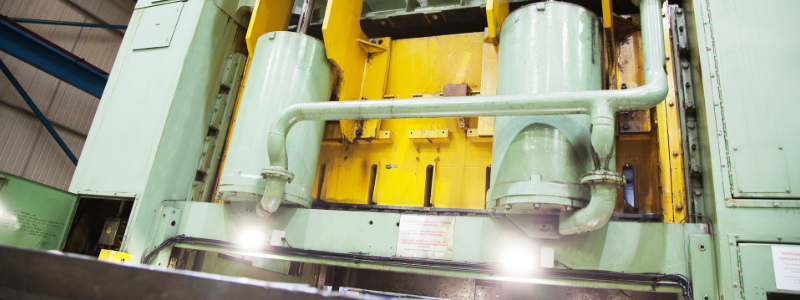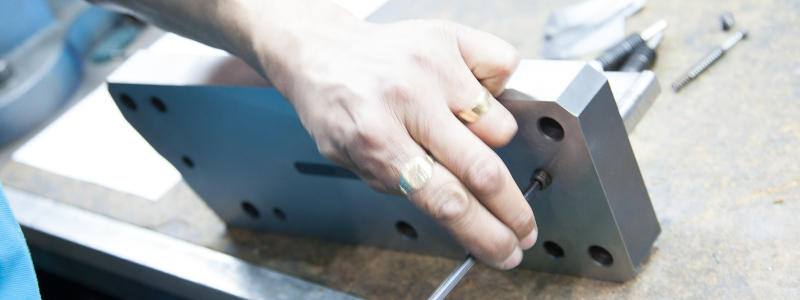What is Stamping Engineering?
Tooling 2000 | 27th October 2020

Presswork Production Machine
Presswork can be described as a process during which sheet metal is formed into a variety of different shapes and sizes, using a press machine that maintains real strength to achieve the desired end result.
The Presswork Process
The pressing process begins with a specially made machine tool which punches and pushes the sheet of metal using considerable force. A tool is placed inside the upper part of the machine press which is partnered with a lower piece that directly corresponds in size, and these tools hit down onto the sheet of metal in a pattern to form the desired workpiece.
Once this initial process is complete, the upper mechanism is then lifted to either press down another time or switch over to a brand-new workpiece. When the press is 100% finished, the workpiece should be the exact same shape and size as the tool that was used to press it. Many commercial-grade machine presses have the capacity to complete several hundred cycles each minute.
Deciding on which press machine is most suitable for each specific component can be determined by taking the workpiece's length and width (referred to as X and Y), the press’ total force (usually measured in tons or kN). The force that the press can achieve is a vital piece of information, but it can be influenced by the molecular makeup as well as the thickness and strength of the workpiece which is to be pressed. Big sheets of metal pieces that require a lot of pressing will best suit the largest presswork machine.
These presswork machines are usually found inside large production companies which supply the automotive (car), white goods (washing machines, fridges) and ventilation industries. However, the average size of a press machine is actually much smaller than the ones found in these locations, and they are available at any good metal fabricators.
The Presswork Machine Process
Press machines also take on different forms and purposes to suit varying tasks, such as those which are mechanical or hydraulic, as well as folding and excenter presses too. Almost all new/modern presswork machines have the capacity to carry out some form of punching and cutting, whilst some are suited for tasks such as deep drawing. The new/modern presswork machines are controlled and monitored typically by one or two specially trained members of staff who position the workpiece and control the machine press.
It can be said that every serious sheet metal fabricator will have at least one presswork machine, so it’s a vital piece of kit for any quality manufacturer. The presswork production process has been perfected and adapted over several decades to reach the high level it’s at today, and the applications and uses of the process are growing with each new day.
Presswork contributes such an important manufacturing step for businesses all over the world, whether they exist for automotive or medical purposes. For precision and accuracy that's equally efficient and fast, the metal presswork process is the ideal solution.
What to Take Away
Tooling 2000 have been providing press capacity and breakdown support since 1996 and are the only UK based tool room with the ability to offer a facility boasting a bolster capacity measuring 4 meters x 2.2 meters with a 1.2 meter shut height. Combined with a ram tonnage of 2,500 tons, Tooling 2000 are well matched to support all suppliers. As well as this, Tooling 2000 are in the process of investing in the latest presswork technology.
Interested in finding out more about Presswork Production? Get in touch and speak to a member of the Tooling 2000 team today on +44 (0) 121 242 2000 or send us an email on office@tooling2000.co.uk. We look forward to hearing from you.

Presswork Production



